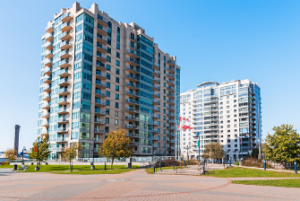Many older Australians want to avoid the burdens and loneliness of home ownership by opting for lifestyle village retirement living instead. Before signing contracts or paperwork, however, extensive research must be conducted first.
Leasehold, licence and freehold retirement villages require fees that cover council and water rates, building insurance premiums, common area maintenance costs and an emergency 24-hour call system maintenance contract; an operator fee must also be included as ongoing expenses.
Independent living
 Independent living villas provide the ideal option for individuals who seek an engaging community without daily assistance yet still want their own private home and can enjoy it freely while being part of village activities.
Independent living villas provide the ideal option for individuals who seek an engaging community without daily assistance yet still want their own private home and can enjoy it freely while being part of village activities.
Other than maintaining and upkeeping your garden area, all maintenance and upkeep of your home is provided for by village management, leaving plenty of time to enjoy all of its facilities and activities.
Residents in lifestyle villages typically pay one single purchase price for their house and an ongoing rental fee for the land it sits on, lowering initial costs significantly compared with retirement villages, without stamp duty or council rates being charged; additionally, residents have the right to form resident committees or associations which represent their interests.
Lifestyle village retirement living are communities designed for people 55 and over who, similar to retirement villages, feature themes or communities that bring people with similar interests together to keep them active and reduce loneliness. Many lifestyle villages provide numerous activities ranging from organised excursions to socialising over tea and cakes; others may even host groups for those interested in cars, arts and crafts or other hobbies and interests.
Social interaction
One key reason people move to lifestyle village retirement living is for socialisation purposes. Residents can easily locate groups and activities of interest to them; there may be special events such as community golf days, card games or theatre trips explicitly organised for residents to attend. Engaging regularly in these activities helps combat loneliness and isolation – essential factors in maintaining good health!
Retirement and lifestyle villages tend to differ slightly in how they organise community groups and activities, typically featuring more social groups for specific interests such as crafts, exercise or ethnic groups than lifestyle villages.
Lifestyle village community activities typically feature group-oriented events by village management and owners. It may involve field trips, yoga, walking club membership, and shopping excursions these agencies organise.
Retirement and lifestyle villages can provide older Australians with a viable solution when looking to downsize their family home, yet still want the social interaction and sense of community that come with living close by. However, independent legal and financial advice must always be sought before entering any contracts relating to lifestyle villages as these can have different payment arrangements and charges than expected, leading to unexpectedly higher bills.
Health and well-being
Retirement villages are designed with your health and well-being in mind, including access to facilities, services and activities that promote healthy aging and foster social interactions among your peers. In addition, security features like 24-hour staff are in place so you can access health care on call.
Participate as much or little as desired in your community – this is an effective way to reduce feelings of loneliness and isolation, which are prevalent among older Australians. Many villages have adopted themes and communities based around shared interests such as car enthusiasts, academics, learning or art enthusiasts – this helps bring people together while diminishing feelings of isolation.
Before choosing a lifestyle or retirement village, carefully research and seek legal advice regarding financial implications and fees. When visiting different villages to investigate what they offer and talk with residents, collect pamphlets and papers to inform your decision fully. Be sure to inquire whether there is a pet policy and check whether children are allowed, as some do not permit frequent visits by grandchildren or family.
Security
Lifestyle village residents tend to have more freedom and choices, though that does not negate any responsibilities they must fulfil. They usually stay busy by joining social committees such as wine clubs or gardening clubs and contributing to the overall management of their village by helping out when necessary – Similar to resort communities; lifestyle villages are attractive choices for older adults looking for independence and choice.
Lifestyle and retirement villages charge monthly fees covering council and water rates, building insurance premiums, village maintenance services and an emergency call system. Residents in each village must first approve any increases to these fees.